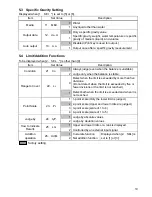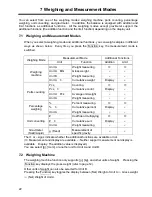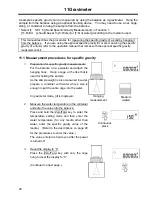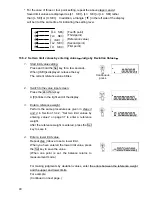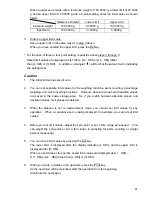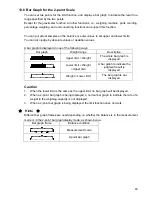
29
4. Measure the weight of the sample in the air.
Put a sample in a cage or on a pan, and
measure the weight of the sample in air. After
the weight display is stable, press the Set key to
enter the weight. Then, [in] blinks in the
display for a few seconds and the measured
weight is displayed. When the weight is
entered, [ ] is displayed in the lower left of the
display.
5. Submerge only the hanging cage and set to “0”.
Before the measurement in water, submerge
only the cage and press the Zero/Tare key.
This is for removing any residual error due to
the hanging cage.
* Pressing the Print key interrupts the
measurement.
6. Measure the weight of the sample in water.
Put the sample on the hanging cage and
submerge the entire volume.
Be careful that the cage does not touch the
bottom of the container.
After the weight display is stable, press the Set
key to enter the weight.
7. Displaying
specific
gravity
When the weight is saved, the resulting specific
gravity will be displayed.
Pressing the Function key toggles the display
between the specific gravity and volume of the
sample.
8. Return to weight display.
You press the Set key while a specific gravity
value is displayed.
The display returns to showing the sample’s
normal weight.
☆
Hints
☆
Measurements with smaller size samples may result in some variations in the measured
specific gravity values. In particular, any sample whose specific gravity is larger tends to
show more variation.
Use as large a sample as possible for obtaining more stable measurements.
Enter the weight in air.
specific
gravity
volume





